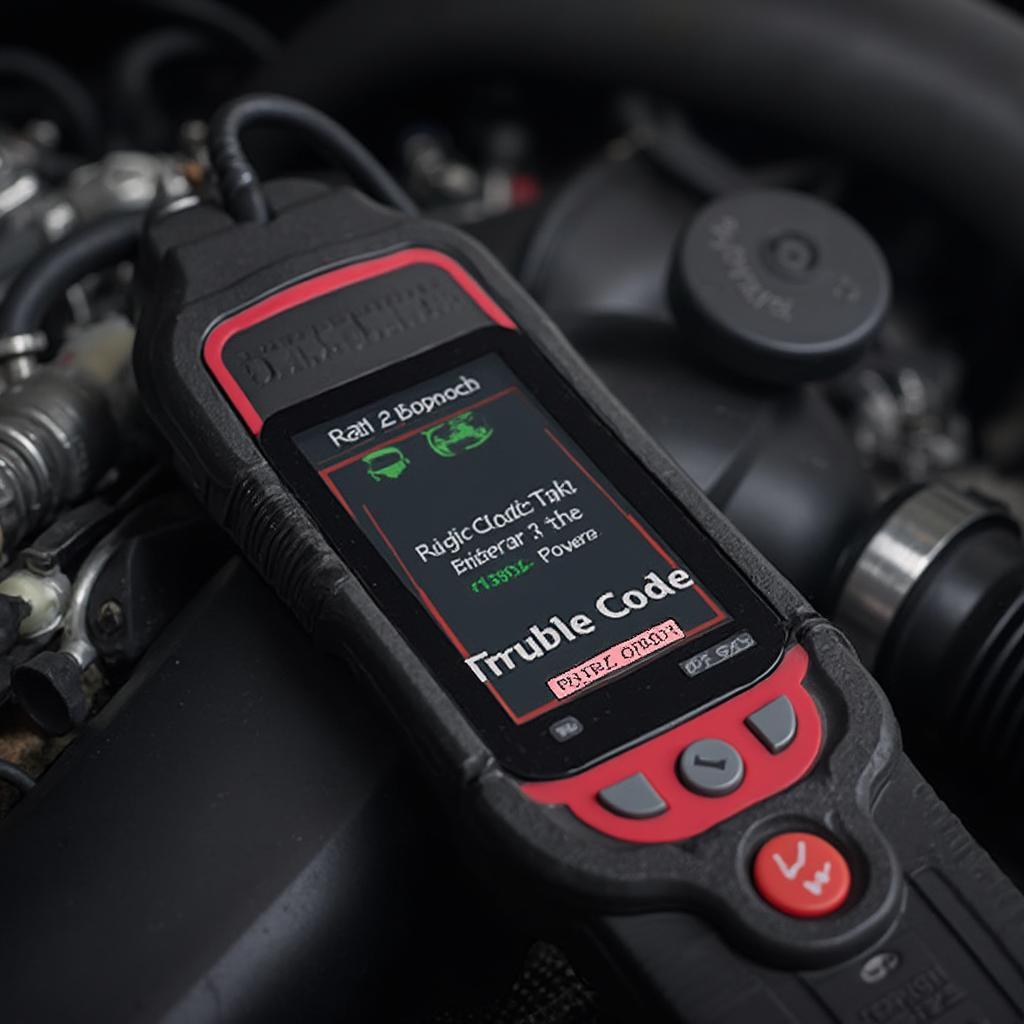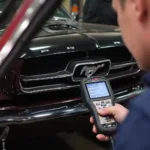An OBD2 misfire is a common engine problem that can manifest in various ways, from slight performance hiccups to noticeable shaking and rough idling. Understanding what causes these misfires and how to diagnose them using an OBD2 scanner is crucial for maintaining your vehicle’s health and performance. This article provides a comprehensive guide to OBD2 misfires, covering their causes, diagnostic procedures, and effective solutions. obd2 misfires
What Causes an OBD2 Misfire?
An OBD2 misfire occurs when one or more cylinders in your engine fail to ignite properly. This can be triggered by a variety of issues, ranging from simple spark plug problems to more complex issues with the fuel system or engine components. Identifying the root cause is essential for implementing the correct fix. Several factors can contribute to this malfunction.
- Faulty Spark Plugs or Wires: Worn-out or damaged spark plugs can fail to produce the necessary spark to ignite the air-fuel mixture. Similarly, damaged or worn spark plug wires can disrupt the electrical current, leading to misfires.
- Fuel System Issues: Problems like a clogged fuel injector, a failing fuel pump, or a lean air-fuel mixture can starve the cylinder of the necessary fuel for combustion, resulting in a misfire.
- Compression Problems: Low compression in a cylinder can prevent the air-fuel mixture from being compressed enough for proper ignition. This can be caused by worn piston rings, damaged valves, or a blown head gasket.
- Sensor Malfunctions: A faulty crankshaft position sensor, camshaft position sensor, or mass airflow sensor can disrupt the engine’s timing and fuel delivery, leading to misfires.
- Vacuum Leaks: Leaks in the intake manifold or vacuum hoses can disrupt the air-fuel mixture, causing misfires.
 OBD2 Scanner Diagnosing Misfire
OBD2 Scanner Diagnosing Misfire
Diagnosing OBD2 Misfires with a Scanner
An OBD2 scanner is a vital tool for diagnosing engine misfires. It allows you to retrieve diagnostic trouble codes (DTCs) that pinpoint the source of the problem. Codes like P0300 (random misfire) or P030X (cylinder-specific misfire, where X represents the cylinder number) are common indicators.
Understanding OBD2 Misfire Codes
Understanding the different OBD2 misfire codes is crucial for accurate diagnosis. For instance, obd2 code p0303 indicates a misfire in cylinder 3. Knowing which cylinder is misfiring allows you to focus your diagnostic efforts on that specific area.
Using an OBD2 Scanner Effectively
Using an OBD2 scanner effectively involves more than just reading codes. It requires understanding the freeze frame data, which provides a snapshot of the engine’s operating conditions at the time of the misfire. This data can be invaluable in diagnosing intermittent misfires. For example, the obd2 misfire counter can provide crucial information on the frequency and severity of misfires.
Fixing OBD2 Misfires
Once you’ve diagnosed the cause of the misfire using your OBD2 scanner and other diagnostic methods, you can implement the appropriate fix. This could involve replacing faulty spark plugs, addressing fuel system issues, or repairing vacuum leaks.
Common Misfire Solutions
- Replacing Spark Plugs and Wires: This is often the first step in addressing misfires.
- Cleaning or Replacing Fuel Injectors: Clogged fuel injectors can be cleaned, but severe cases might require replacement.
- Addressing Vacuum Leaks: Locating and repairing vacuum leaks is crucial for restoring proper air-fuel mixture.
Seeking Professional Help
While some misfire issues can be resolved with DIY repairs, more complex problems like low compression often require the expertise of a qualified mechanic. They have the tools and knowledge to diagnose and repair internal engine problems effectively. For example, issues like obd2 p0300 gmc can be particularly challenging to diagnose without professional assistance.
“Misfires can range from minor annoyances to significant engine problems. Regular maintenance and prompt diagnosis with an OBD2 scanner are essential for keeping your vehicle running smoothly,” says Alex Thompson, ASE Certified Master Technician.
Conclusion
OBD2 misfires can be a frustrating problem, but with the right tools and knowledge, you can effectively diagnose and address the issue. Using an OBD2 scanner to retrieve diagnostic trouble codes and understand the freeze frame data is crucial for pinpointing the root cause of the misfire. From simple spark plug replacements to more complex engine repairs, taking prompt action can prevent further damage and keep your vehicle running smoothly. obd2 calculated misfire
FAQ
- What is an OBD2 misfire?
- What are the common causes of misfires?
- How can I diagnose a misfire with an OBD2 scanner?
- What are the common OBD2 codes for misfires?
- How can I fix an OBD2 misfire?
- When should I seek professional help for a misfire?
- Can an OBD2 scanner tell me which cylinder is misfiring?
Common Misfire Scenarios
- Scenario 1: Car shaking and check engine light flashing.
- Scenario 2: Rough idle and decreased fuel economy.
- Scenario 3: Intermittent misfires during acceleration.
Further Reading
- How to Use an OBD2 Scanner
- Understanding OBD2 Trouble Codes
- Maintaining Your Car’s Fuel System
Contact Us for Assistance
Need help with your OBD2 misfire? Contact us via WhatsApp: +1(641)206-8880, Email: [email protected] or visit us at 789 Elm Street, San Francisco, CA 94102, USA. Our 24/7 customer support team is ready to assist you.

